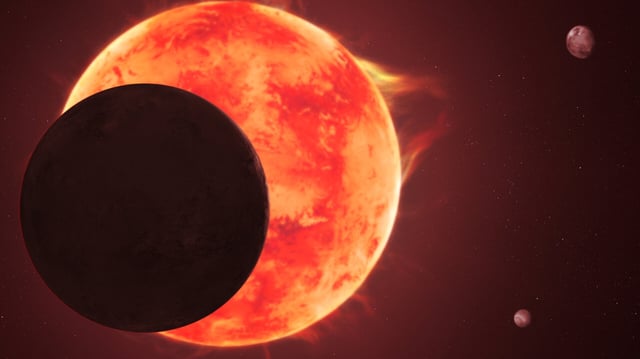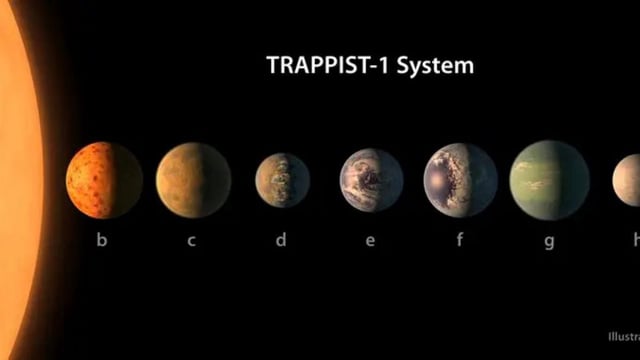Overview
- Two JWST NIRSpec/PRISM transits of TRAPPIST-1 d produced 500–1,000 ppm stellar contamination slopes that were corrected to reveal a flat spectrum within ±100–150 ppm.
- The flat transmission profile rules out clear hydrogen-rich atmospheres at more than 3σ and rejects many high-mean-molecular-weight compositions—Earth-, Venus- and Titan-like cases—at over 95% confidence.
- With no detectable molecular absorption, only an extremely thin Mars-like atmosphere, a Venus-like aerosol layer, or a barren, airless surface remain as viable explanations.
- Evolutionary modeling indicates that if TRAPPIST-1 d is airless, the inner trio of planets formed with fewer than roughly four Earth oceans of water.
- The team is targeting the outer TRAPPIST-1 planets and planning secondary-eclipse observations to overcome red-dwarf variability and probe potential atmospheres.

